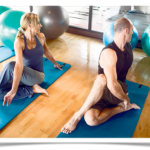
by cjxpadmin | Apr 1, 2012 | Hanging Closet, Job Readiness, Spring 2016 Magazine
What The Codes Mean:
I know. You hear the word dress code and something inside you inwardly cringes. The very words make you want to rise against the establishment, rage against the machine, and all of that noise. But, dress codes are a part of life that we all have to live with. They don’t have to be restrictive; you just have to know what you can and cannot do so that you can make the dress code
your own. You have to know the rules before you can break them after all!
 Black Tie – Think social gatherings and fine dining!
Black Tie – Think social gatherings and fine dining!
For men: This means a tuxedo. A dark or black suit is not ‘as good’ for a black tie event. Unfortunately, for men this isn’t going to be one of those times you are going to have a lot of room to express your individualism. A simple, classic tuxedo with black bow tie is exactly what you’re looking for.
For women: This means elegance. Think long gowns, although a very nice cocktail dress would work also! If you’ve been looking for an excuse to go to a salon… you are in luck! Visit your hairdresser, talk to your nail tech, or whoever helps you dazzle a crowd! Don’t forget jewelry!
- As a side note, you may or may not run into what some call White Tie. This is not the same as black tie; it is very specific about what men and women can and can’t wear. You won’t see this term often, but I wanted to include it just in case you run into it.
- Men: A tailcoat, white vest, white shirt and white bow tie.
- Women: Beaded gowns. If you have a stylist or buyer, they may need a call. think super formal weddings and awards.
Black Tie Invited – This means social gatherings and fine dining where a tuxedo or gown is not completely necessary!
For men: Your host would love for you to wear a tuxedo, but you will not be turned away if you aren’t. However, the only other real option is a dark (black) suit and tie.
Any less formal and you will stick out like a sore thumb.
 For women: This is pretty much the same as above. A light sun dress wouldn’t work here as it’s not formal enough. At this point, you’re still trying to dazzle and impress the hire-ups, parents, or random paparazzi. Will there be paparazzi there? I don’t know, but why take that chance?
For women: This is pretty much the same as above. A light sun dress wouldn’t work here as it’s not formal enough. At this point, you’re still trying to dazzle and impress the hire-ups, parents, or random paparazzi. Will there be paparazzi there? I don’t know, but why take that chance?
Black Tie Optional – Still more social gatherings, and fine dining!
For men: Good news! If you would like to wear a tuxedo, you can, but your host would be happy as long as you wear a dark (black or navy) suit and tie. How’s that for fantastic! A whole night of semi-comfortable, just for you!
For women: Black tie optional is the same as black tie. Women have more variety in what is available to wear in these situations, but should stick with the long gown or nice cocktail-length dress. As with black tie, a trip to the hairdresser is appropriate.
Cocktail Attire – Social gatherings, and some fine dining!
For men: Cocktail attire for guys equals suit and tie or coat and tie. Colors and fabrics may vary, season or location pending.
For women: Cocktail-length dress that varies with color and fabric also depending upon season or location. It’s a way less formal event than black tie, but it still calls for you impressing someone. Hair and make-up should be appropriate to the time of day (early evening).
 Business Casual – You’ll typically see this at a business or some restaurants that are trying to maintain a certain look and atmosphere.
Business Casual – You’ll typically see this at a business or some restaurants that are trying to maintain a certain look and atmosphere.
For men: Wearing a suit and tie would be overdressing. Khakis, slacks, button down collars, and maybe a sport coat, if you feel the need to have one. A tie isn’t strictly necessary. Feel free to break out that pink shirt or pumpkin colored polo. Jeans, however, are not business casual.
For women: Skirts, pants, blouses and dresses in simple comfortable fabrics are the order for the day! Your clothes will need to be more conservative with the way you dress, but color is not outlawed – wear something that would be appropriate to the office environment. As above for the guys, jeans are not business casual for the ladies either.
 California Casual – This is a workplace term not used often in more conservative areas.
California Casual – This is a workplace term not used often in more conservative areas.
First, let me caution you with this one. You aren’t going to see this much outside of the West Coast of the US. This basically means that for men and women, anything goes such as jeans, polos, and nice pullovers. In the summer months, you might even see shorts. If you have a company that has this option for dress code, please practice sense when dressing and make sure that your clothes project the kind of work that you’re doing. Meeting with clients would still dictate that you wear more conservative options.
Casual – Yet even more social gatherings, business and dining!
Regardless of gender, this is a very informal environment that gives you greater freedom of expression! You’ll usually see this at a workplace on Fridays or maybe a backyard barbecue. Jeans,
shorts, and t-shirts are fine. (T-shirts with logos that are not for a little league team or the like is not work appropriate.) This is your chance to be you and be comfortable, but still presentable.
Some Other Useful Terms:
Jacket Preferred/Required – Used by restaurants, this means that they prefer gentlemen to wear a dinner jacket. For women, a dress or nice dress pants are always a good idea.
Jacket and Tie Required – Same as above, but with the addition of a tie.
Semi-Formal Attire – A suit or gown isn’t necessary, but it still requires that you stick to clothes in which you would be taken seriously. Take what you would wear to a nice dinner and ramp it up!

by cjxpadmin | Apr 1, 2012 | Job Readiness, Spring 2016 Magazine
If you are a laid off worker, this means you left your job through no fault of your own. There may be help available for you with regard to your education or training to start a new career.  Many of us have lost our jobs during this economic turn down and may be facing difficult decisions of taking any job that comes along or starting over with a new career.
Many of us have lost our jobs during this economic turn down and may be facing difficult decisions of taking any job that comes along or starting over with a new career.
It is hard enough to face the trials of keeping our lives together — daycare, house payments, transportation and the taxing job of finding a job. What should we do?
Being on a job for twenty years and now, you want me to start over? Wow! How much of a pay cut will you have to settle for? Do you go work for someone who is the same age as your children? Or, are you a young person trying to work a full-time job and go to school full- time? No matter what the case, if you were laid off from your job, help may be available.
Help comes in the form of the Workforce Investment Act Dislocated Worker Program (WIA). This program is offered in all fifty states. What does it do? WIA Programs provide high-quality employment and training services that address the needs of individuals in need of training, retraining, and skill upgrades.
This program aims to increase the employment, job retention, earnings, and career advancement of U.S. workers. This Adult and Dislocated Worker Program, under Title I of the Workforce Investment Act of 1998, is designed to provide quality employment and training services to assist eligible individuals in finding and qualifying for meaningful employment and to help employers find the skilled workers they need to compete and succeed in business.
The Core Services includes outreach, job search and placement assistance, and labor market information available to all job seekers;
Intensive Services includes more comprehensive assessments, development of individual employment plans and counseling and career planning; and
Through Training Services, customers are linked to job opportunities in their communities, including both occupational training and training in basic skills. Participants use an “individual training account” to select an appropriate training program from a qualified training provider.
“Supportive” Services such as transportation, childcare, dependent care, housing and needs-related payments are provided under certain circumstances to allow an individual to participate in the program.
States are responsible for program management and operations including enrollment, service delivery, and certification of training providers.
In addition to unemployed adults, employed adults can also receive services to obtain or retain employment that allows for self-sufficiency. State and local areas are responsible for establishing procedures for applying the priority and self-sufficiency requirements.
With all of this being said, each State has the responsibility for implementing this program. Check your State’s guidelines. You may be able to get assistance in starting a great new life.
In Texas and specifically in the Heart of Texas Board Area (McLennan, Bosque, Falls, Freestone, Limestone Counties), funds are available for the dislocated worker. This is a great opportunity for going to college to get an Associates Degree or obtain a license or certificate for a trade.
At the HOT Workforce Center at 1416 South New Road in Waco, Staff will help you screen and apply for this possibility. It’s simple and quick with a broad range of assistance. Sheena Williams at 254-296-2922 will schedule an appointment time. Invest a little time in exploring this chance to change your life. The HOT Workforce Center is ready to assist you. If you are in one of its outlining counties, go to the nearest office and tell them you have an interest. (See corresponding story HOT Workforce Announces Enhanced Job Placement Efforts in this issue!)
What do you have to lose? Nothing, but almost everything to gain. Check it out today!

by cjxpadmin | Mar 25, 2012 | Job Readiness, Spring 2016 Magazine
5 Foods to Eat Before Your Interview
From Allhealthcare.com

You are what you eat, so when it comes time for your interview, what can you eat that will make you alert, calm, focused, and quick thinking? We’ve spoken to experts and done our share of research to compile a list of foods that are essential to interview success.
Remember — be sure to eat your meal at least an hour or an hour and a half before the actual interview to ensure that it’s at least partially digested so that its effects on your brain are in route. The perfect meal might look like a wild salmon and spinach egg white omelet, a side of yogurt and nuts, and a cup of coffee. How do these foods help your brain? Find out!
First Thing to Eat: Lean Protein
Though a bagel or blueberry muffin might be the easiest snacks to grab before your interview, avoid carbohydrates if you possibly can. In an MIT study with two groups eating either a high-protein or high-carbohydrate breakfast, researchers found that two hours after consumption the carb group had tryptophan levels four times higher than the protein group.
So unless you want to doze off during your interview, stick to lean proteins, like fish, white meat, or eggs. Consuming protein helps your body manufacture two chemicals made from tyrosine — norepinephrine and dopamine. These two chemicals enable the synthesis of neurotransmitters and ramp up your mental alertness.
Next: Healthy Fats
Your brain needs a healthy supply of essential fatty acids, or omega-3 fatty acids, for it to function optimally. These fats are the primary building block for brain tissue and help you stay focused, supply oxygen to the brain, protect brain cell membranes, and decrease your chances of dementia, Alzheimer’s, stroke, and other brain illnesses later in your life.
You can only get these fatty acids from food because your body doesn’t produce them naturally. So stock up on fish (especially wild salmon), nuts (especially walnuts), olive oil, avocados, and seeds (especially flax seed). Flax is also the best source of alphalinoleic, a healthy fat that enhances the performance of the cerebral cortex — where your brain processes sensory information.
Next: Whole Grains & Leafy Green Vegetables
Though recent research has found that ginkgo biloba does not improve memory, don’t worry — B vitamins, like vitamins B6, B12 and folic acid, are still proven to help your memory, focus, and overall brain health and power. Folic acid, in particular, helps produce red blood cells and improve your sense of wellbeing and mental clarity.
Whole grains, like brown rice, are a great source of B vitamins, as well as broccoli, parsley, cauliflower, and brussels sprouts. Leafy green vegetables like kale, spinach, and Swiss chard, pack in high amounts of folic acid and vitamin K, which also help your brain focus and fight off memory disorders, like dementia.
Coffee
We all know it — coffee is the one thing that can get you up and alert first thing in the morning. So unless you’re terribly sensitive to coffee, you should without a doubt have a cup before your interview. Researchers have found coffee enhances short-term memory performance and helps improve attention capacity and problem-solving skills.
But don’t overdo it! Too much coffee will not only make you a jittery, nervous wreck, but you’ll have to use the bathroom more than a few times, considering caffeine is a diuretic. This will only make the interviewer think you’re unprofessional, unprepared, and certainly not the right candidate for the job.
Next: Low-Fat Yogurt and Mixed Nuts
There’s a fine line between being super pumped for your interview and being a twitchy, anxious mess. Coffee may be your liquid energy, but yogurt can be your goopy courage. How so?
In a Slovakian study, scientists gave subjects either a placebo or three grams each of two amino acids — lysine and arginine. The researchers then asked them to deliver a speech and found that according to blood measurements of stress hormones, the amino acid subjects were half as anxious during and after the speech than the placebo subjects.
Yogurt is considered the best food source of lysine, and nuts are packed with arginine, so stock up! A great combination would be putting nuts in your yogurt — consider almonds or walnuts mixed into vanilla or plain yogurt. Fruity yogurts work too!

by cjxpadmin | Mar 1, 2012 | First Issue, March 2012 Magazine
 You know how it starts. “I need to rest; a small nap after work won’t hurt.” Maybe a “I don’t have time to work out, I’m busy with work all day!” and my fave “It’s just an innocent cookie to tide me over till lunch, what could it hurt?”
You know how it starts. “I need to rest; a small nap after work won’t hurt.” Maybe a “I don’t have time to work out, I’m busy with work all day!” and my fave “It’s just an innocent cookie to tide me over till lunch, what could it hurt?”
However it happened, you are now out of shape. Don’t worry though! The first step is admitting that you could use some help. And that’s where we come in. We are going to debunk some myths that will hopefully make getting fit a little easier while you work!
Myth 1: You have to do an hour of cardio all at one time to get the benefits.
Truth: Wrong. Though doing it one time is pretty ideal, you can fit in 10 minutes anywhere! Do some jumping jacks on your break. Go up and down the stairs of your office building. Morning classes? Try walking the long way to your class instead of picking the closest parking spot. Don’t have time early in the morning? If you’re a night owl, get your groove on before bed! It’s all about getting your blood pumping when you can. Some activity is better then no activity.

Myth 2: All you have to do is exercise and you’ll lose weight.
Truth: If only that were true. While you can be healthy at any size, if you want to lose weight around your middle or get into those jeans you wore in high school, you may have to give up grandma’s cookies — at least for a while. The best way to stave off snacking problems is to keep healthy snacks around. Instead of grabbing those Oreo cookies, maybe some apple or orange slices will do. Or if you have to have a sweet treat, you can now buy 100 calorie packs of cookies, crackers, and a lot of other snacks. Most cravings come about because you want something you can’t have at the moment. No one sets out to eat a whole can of Pringles, but by keeping a smaller can, you can have your cake or chips and eat them too!
Myth 3: You have to do aerobics.
Truth: If hopping around a gym in a leotard and 80’s like onesies is not your bag, try playing soccer. Join a martial arts class or join a basketball club. Not a sports fan? Zumba is a style of aerobics that’s more like dancing. Pilates is a great choice if you want to work out and relax. Too ambitious for you? Walking around the black for 30 minutes is another way of getting your blood going. You can also take the kids if you’re one of those busy parents who can’t find a sitter. Did we mention jumping jacks for 10 minutes? Awesome….

Myth 4: You need to join a gym to get fit.
Truth: By no means do we want you to throw away your gym membership, but for those of you who are tight on money or you’re not a joiner, there is hope. You can work out from any space. Like say for instance…your living room! That’s right! You don’t need a ton of equipment to get in shape. You can use towels for resistance bands, chairs for back and arm work and the floor for ab work. There is literally tons of free information about working out from home. The only thing that’s stopping you is you!
Myth 5: If I’m not sore, then I didn’t work out properly.
Truth: Okay, yes, if it’s too easy, you may want to work out a bit more. But soreness is caused by tiny tears in your muscle fibers. If you switch up your routine every once in a while, then, some soreness is to be expected. However, being sore after every work out means you’re not allowing your body to heal. Your muscles need a break or they won’t get stronger. Work on a different muscle group while another one is healing. You’ll still get your workout in, but it’ll give your body time to heal.
Myth 6: I’m hungry!
Truth: True, you might be hungry. If so, you should eat — no question about it. But! Before you go for that gyro, drink a glass of water. Sometimes that craving for food is actually a craving for water. So whenever you’re hungry, grab some agua and give it a few minutes. If you’re still hungry, get something to eat. It doesn’t have to be a four course meal, but there is nothing good about going without food for the sake of weight loss.
Myth 7: Water isn’t that good for you.
Truth: While we’re on the topic of water, there is currently a rumor that water isn’t that good for you.

by cjxpadmin | Mar 1, 2012 | March 2012 Magazine
By Sheena Williams
“I don’t have the skills.”, “They won’t hire me”, or “I’m not cut out for this type of work.” Why don’t you have the skills? How do you know they won’t hire you? Who told you that you were not cut out for that type of work? Sometimes we can be our own worst enemy. There are doubts that every woman has at times that keep them from not only being good at what they do, but it keeps them from being great. Everyone has their problems, there is no denying that, but there is no issue that cannot be improved upon or resolved. The first step is believing that you can accomplish anything you set out to do. Once you start believing that you can do anything, your employer will believe in you as well.

Step 1: Take a deep breath. Work can get stressful. The kids are asking for something, your husband needs help with a presentation he’s putting together, or your term paper is due. There are days when life can get pretty intense, and that is when it is most important for you to take a deep breath and center yourself. Taking 5 minutes just to do some deep breathing can get you ready to face the rest of your day.
Step 2. Know your strengths. If you are only focused on the things that you can’t do, then you will never get to the things that you can do. Okay, you may not be the greatest cook, but you were organized enough to get all of the recipes that you want to try arranged in neat subsections and categories such as lunch, dinner and appetizers. You may not be the greatest typist, but you organized the company Christmas party. Public speaking makes you break out in a cold sweat, but that speech you wrote for your boss last week got him rave reviews in the local newspaper. By focusing on your strengths and your abilities, it will give you more confidence to tackle the bigger things in life.
Step 3. Be nice to others. Having a bad self-image is being grouped with excuses for not being nice to others. Not cool. If you’re having a low self-image day, it does not give you the license to make someone else’s day miserable. Did we mention that being nice to people makes you feel better which in turn makes you feel good about yourself. By the same token, in another turn, feeling good about yourself helps with your self-image?
Even if you’re not going to feed a small country, complimenting someone on their dress and seeing them smile can give you a boost of happiness. Try it! It won’t hurt you!

Step 4. Negativity is bad. When you see a problem, your first reflex is to look at all of the things that will keep you from doing the task at hand. Try looking at all of the parts that you can do. Once you start working on those, it will make it easier to get the hard parts done. The more things you accomplish, the more it will push you to do things that seem daunting at first. You don’t have to tackle it as a whole — you can put it into little pieces and work your way up.
Step 5. Find your own cheerleading squad. You could brag about yourself all day…or you could have Tammy’s perfect figure, or Josie’s awesome job, you’re not focusing on the things that YOU have in your life. Everyone’s priorities are different. What someone else may think is important right now, may not be all that important to you. Yes, she bought a beautiful house, but it was while you were studying abroad in Europe. Tammy’s figure is perfect, but you have amazing fashion sense. Josie has a terrific job, but your apartment could be put on the cover of a magazine! Know what makes you great and own it!
Remember the steps:
- Take a deep breath.
- Know your strengths.
- Be nice to others.
- Negativity is bad.
- Find your own cheerleading squad, and
- Be grateful!
Follow these 6 simple and key things to get started on that road to a better self-image!

 Black Tie – Think social gatherings and fine dining!
Black Tie – Think social gatherings and fine dining! For women: This is pretty much the same as above. A light sun dress wouldn’t work here as it’s not formal enough. At this point, you’re still trying to dazzle and impress the hire-ups, parents, or random paparazzi. Will there be paparazzi there? I don’t know, but why take that chance?
For women: This is pretty much the same as above. A light sun dress wouldn’t work here as it’s not formal enough. At this point, you’re still trying to dazzle and impress the hire-ups, parents, or random paparazzi. Will there be paparazzi there? I don’t know, but why take that chance? Business Casual – You’ll typically see this at a business or some restaurants that are trying to maintain a certain look and atmosphere.
Business Casual – You’ll typically see this at a business or some restaurants that are trying to maintain a certain look and atmosphere. California Casual – This is a workplace term not used often in more conservative areas.
California Casual – This is a workplace term not used often in more conservative areas.









